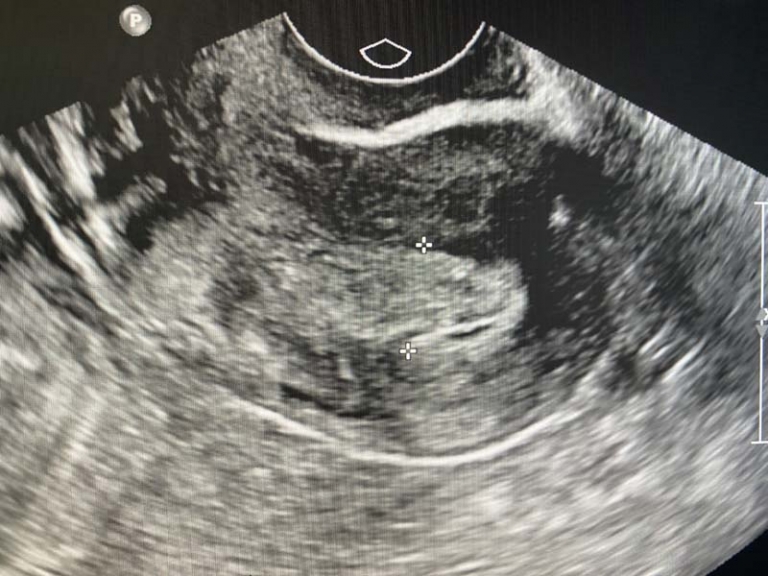IUD on Ultrasound
Intrauterine devices (IUDs) are a popular form of long-term, reversible contraception. Many individuals choose IUDs due to their effectiveness and convenience. However, like any medical device, proper placement and monitoring are important for ensuring their safety and efficacy. This is where imaging, particularly ultrasound, plays a role. Ultrasound provides a non-invasive and accurate way to visualize an IUD’s position within the uterus.
What is an IUD?
An IUD, or intrauterine device, is a small, T-shaped contraceptive device inserted into the uterus to prevent pregnancy. There are two main types: hormonal IUDs, which release progestin, and copper IUDs, which release copper ions that create a hostile environment for sperm. Both types are effective in preventing pregnancy, but their success largely depends on their correct placement within the uterine cavity.
The Role of Ultrasound in IUD Imaging
Ultrasound is a key imaging modality for assessing IUD placement. It uses high-frequency sound waves to create detailed images of the uterus and other pelvic organs. Because it is non-invasive, quick, and does not involve radiation, ultrasound is a preferred method for evaluating IUD position.
There are two types of ultrasound for this purpose:
• Transabdominal Ultrasound: This method involves placing a transducer on the lower abdomen to obtain an image of the uterus. It is less invasive and provides a broader view of the pelvic area.
• Transvaginal Ultrasound: A more detailed and accurate method where a specially designed transducer is inserted into the vagina. This technique offers a closer view of the uterus and the IUD, making it easier to assess its exact placement.
Why is Imaging Important for IUDs?
Proper placement of an IUD is critical for its effectiveness in preventing pregnancy. If an IUD is incorrectly positioned, it may not work as intended, and the risk of complications increases. Ultrasound imaging helps identify several key issues:
1. Verification of Proper Placement: Ultrasound confirms that the IUD is correctly positioned within the uterine cavity. An IUD should be located near the fundus, the upper part of the uterus, to ensure optimal efficacy.
2. Detection of Misplaced IUDs: In some cases, an IUD may become displaced or partially expelled from the uterus. Ultrasound imaging can detect whether the IUD has moved from its original position.
3. Identification of Complications: While rare, complications such as uterine perforation or embedding of the IUD into the uterine wall can occur. Ultrasound is the first-line imaging modality for identifying such complications.
How to Interpret an IUD on Ultrasound
Interpreting an IUD on ultrasound requires an understanding of the device’s shape and appearance. On ultrasound, an IUD typically appears as a linear, hyperechoic (bright) structure within the uterine cavity. The two arms of the T-shaped device should be clearly visible and oriented towards the uterine fundus.
1. Transabdominal Ultrasound Appearance: In a transabdominal ultrasound, the IUD appears as a bright line within the uterus. This method provides an overview of the pelvic anatomy and can identify if the IUD is positioned too low in the uterine cavity or outside of it.
2. Transvaginal Ultrasound Appearance: A transvaginal ultrasound offers a more detailed view. It shows the IUD’s position in relation to the uterine walls and fundus. The endometrial stripe, which is the lining of the uterus, should appear uninterrupted by the IUD except where the IUD arms touch it. This appearance indicates the IUD is in the correct location.
Common Ultrasound Findings of Misplaced IUDs
Understanding the common ultrasound findings of misplaced IUDs is important for early detection and management.
• Low Placement: If the ultrasound shows the IUD positioned low in the uterine cavity, closer to the cervix, it indicates low placement. This situation may reduce contraceptive effectiveness and increase the risk of expulsion.
• Partial Expulsion: When only a part of the IUD is visible within the uterus or if it appears to be exiting through the cervix, this suggests partial expulsion. In such cases, a healthcare provider may need to remove or replace the IUD.
• Perforation: If the IUD is not seen in the uterus but there is a linear, hyperechoic structure outside the uterine cavity, this could indicate uterine perforation. Perforation is a rare but serious complication that may require surgical intervention.
Ultrasound Imaging Tips for IUDs
To ensure the most accurate assessment, certain techniques can enhance the quality of ultrasound imaging for IUDs:
• Use a Full Bladder for Transabdominal Ultrasound: A full bladder helps lift the uterus into a more favorable position, improving visibility during a transabdominal ultrasound.
• Employ Doppler Imaging: Doppler ultrasound can help differentiate between the IUD and other structures by showing blood flow, as IUDs typically have no flow signals.
• Angle the Transducer Correctly: Proper transducer placement and angling are important to obtaining a clear image of the IUD. Slight adjustments can make a significant difference in visibility.
Advanced Ultrasound Techniques for IUD Imaging
While traditional ultrasound methods are effective, advanced techniques can provide additional insights in complex cases.
• 3D Ultrasound: Three-dimensional ultrasound imaging offers a more comprehensive view of the uterine cavity and the IUD’s position. This technique can be particularly helpful in cases where the standard 2D ultrasound does not provide a clear picture.
Conclusion
Ultrasound imaging is an important tool for the management and monitoring of intrauterine devices. By providing a clear view of the IUD’s position, ultrasound helps ensure that the device is correctly placed and free from complications.

